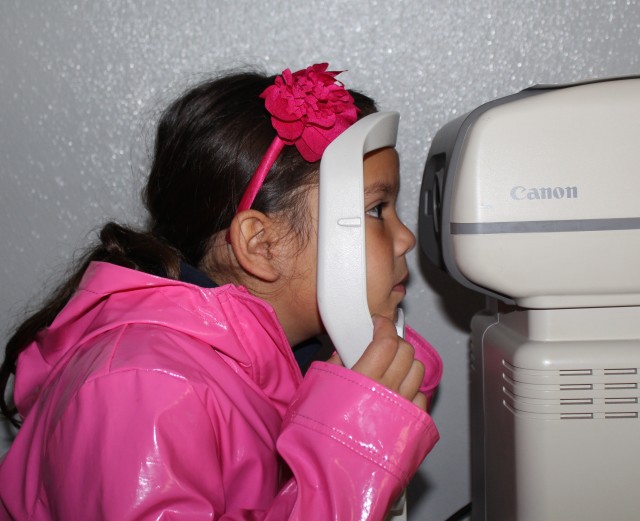But bridging the gap between a failed vision test and a student with glasses on –- ready to see the math problem on the board, the words in the book and the baseball coming over the plate –- has been a difficult task. Increasingly, schools and nonprofit organizations are working together to go beyond mandatory vision screening to help low-income students obtain the glasses they need to succeed.
“What we need is a systematic approach,” Coleman said.
Screening of student vision is mandatory in California schools and one of the new laws, Senate Bill 1172, adds the requirement that a student’s near vision be tested, in addition to far vision. The law also makes plain that vision screening is required in kindergarten, or when a student first enters a school district, and in second, fifth and eighth grades –- a change from the previous language that required vision testing upon entry and thereafter “at least every three years.”
The second new law, Assembly Bill 1840, allows the use of “photoscreening” –- a hand-held device that detects vision issues –- as well as the use of an eye chart in a student vision screening. The device costs about $7,000.
The consequences of impaired vision are far-reaching for students, including underachievement, disengagement and behavior problems, said Charles Basch, a professor at Teachers College of Columbia University. Because most learning occurs visually, and low-income students are at greater risk of “underdiagnosis and undertreatment” of vision problems, getting glasses on students needs to be part of school reform efforts to improve academic outcomes, says Basch, author of the research brief “Healthier Students are Better Learners: A Missing Link in School Reforms to Close the Achievement Gap.”
“It’s a need that has a pretty simple solution to it,” said Nancy Prail, director of the New York-based ChildSight, which in 2013-14 performed thousands of vision screenings to middle school students in the Los Angeles area, and distributed more than 2,500 pairs of eyeglasses.
After a student fails to read the eye chart in a vision screening conducted by a school nurse, a letter is typically sent home informing the family of the results and stating that the child needs a more in-depth eye examination. In low-income families, following through on that referral is often difficult, Prail said.
“There’s a whole stew that gets stirred up,” Prail said, including a family’s difficulty in finding a provider that will accept Medi-Cal and the inability to take time off work to bring a child to an appointment.
Bringing clinicians to schools is a way to overcome those barriers, Prail said. Some school-based health centers provide the exams and several nonprofit groups are working with school districts to send optometrists and mobile eye exam vans to schools in California.
The San Jose Unified School District is partnering with Vision to Learn, a Los Angeles-based nonprofit that provides free eye exams and glasses to children in low-income communities. It has simplified the process of getting glasses on students, said Melinda Landau, manager of the Health and Family Support Programs at the district.
For four rainy days last week, the 15-foot Vision to Learn eye-exam van was parked outside a portable classroom at Trace Elementary while a parent volunteer shepherded groups of three or four students from classrooms into the world of eye examination machines -- and best of all, a display case of red, purple, blue and black eyeglass frames for kids to choose.
“I lost my glasses in first grade,” said Camielle Toscano, a second-grader at Trace Elementary, who sat in rain boots and a rain jacket waiting for an eye exam in the van.
At the back of the van, optometrist Dr. Chris Low slid lenses of various magnification strengths into a machine as Keiasia Johnson, a first-grader, looked through the lenses and read an eye chart.
Test lenses brought the letters into focus. “They look fine when I have my glasses on,” Johnson said. Stepping to the other end of the van, Johnson tried on a variety of eyeglass frames with the help of optician Lisa Nguyen before settling on pink. Nguyen will return to Trace Elementary to deliver and fit the eyeglasses on students in two to three weeks.
Because school partnerships with nonprofit organizations are dependent upon philanthropic fundraising and priorities, the search for sustainable vision care for students is ongoing. With more California children entitled to pediatric vision services through the Affordable Care Act and the expansion of Medi-Cal, one strategy is to bill insurance for the care that is provided at the school site.
